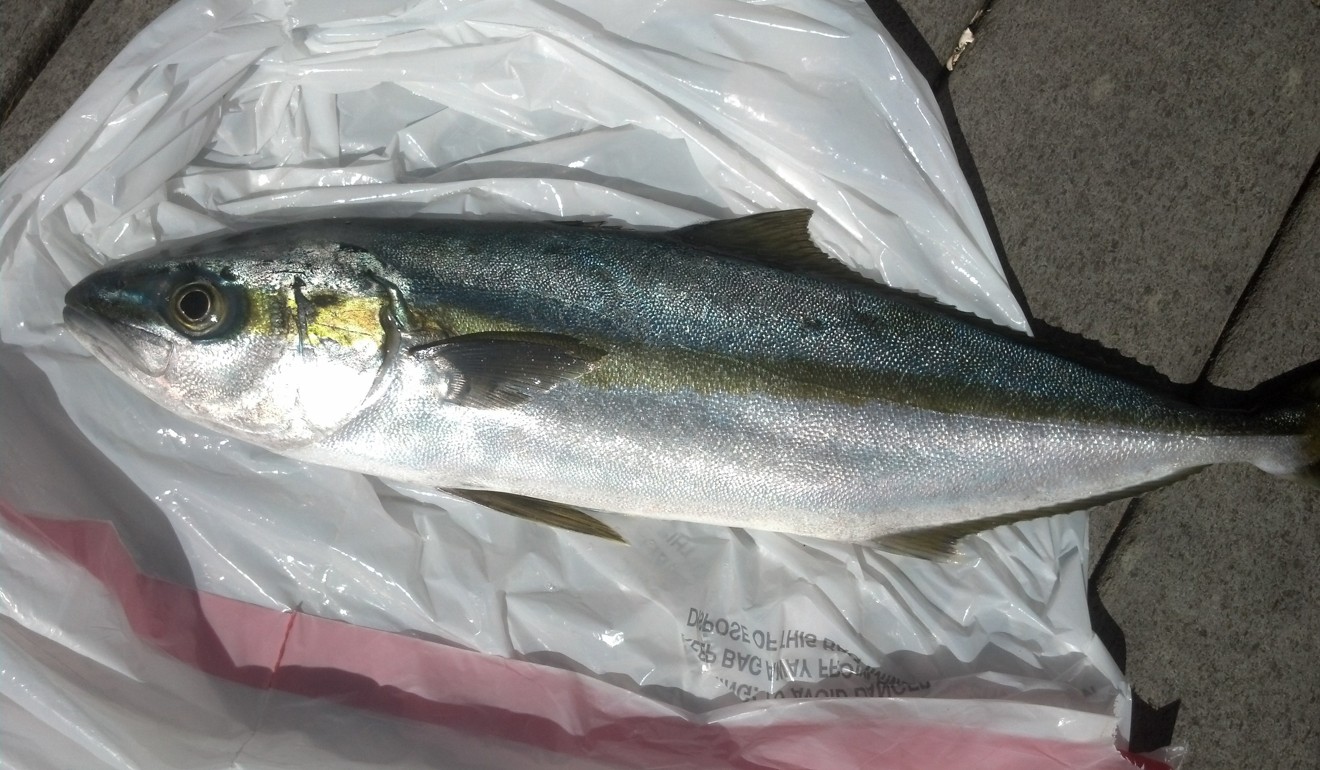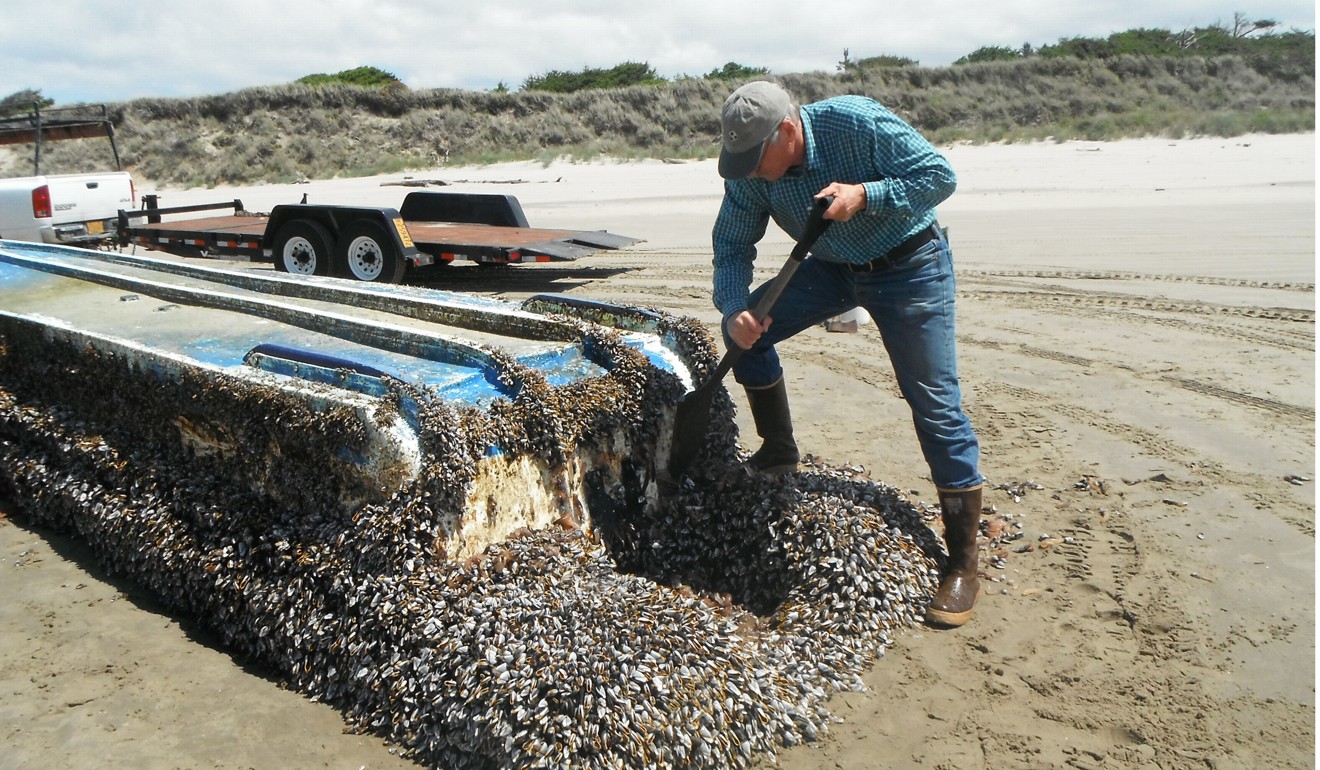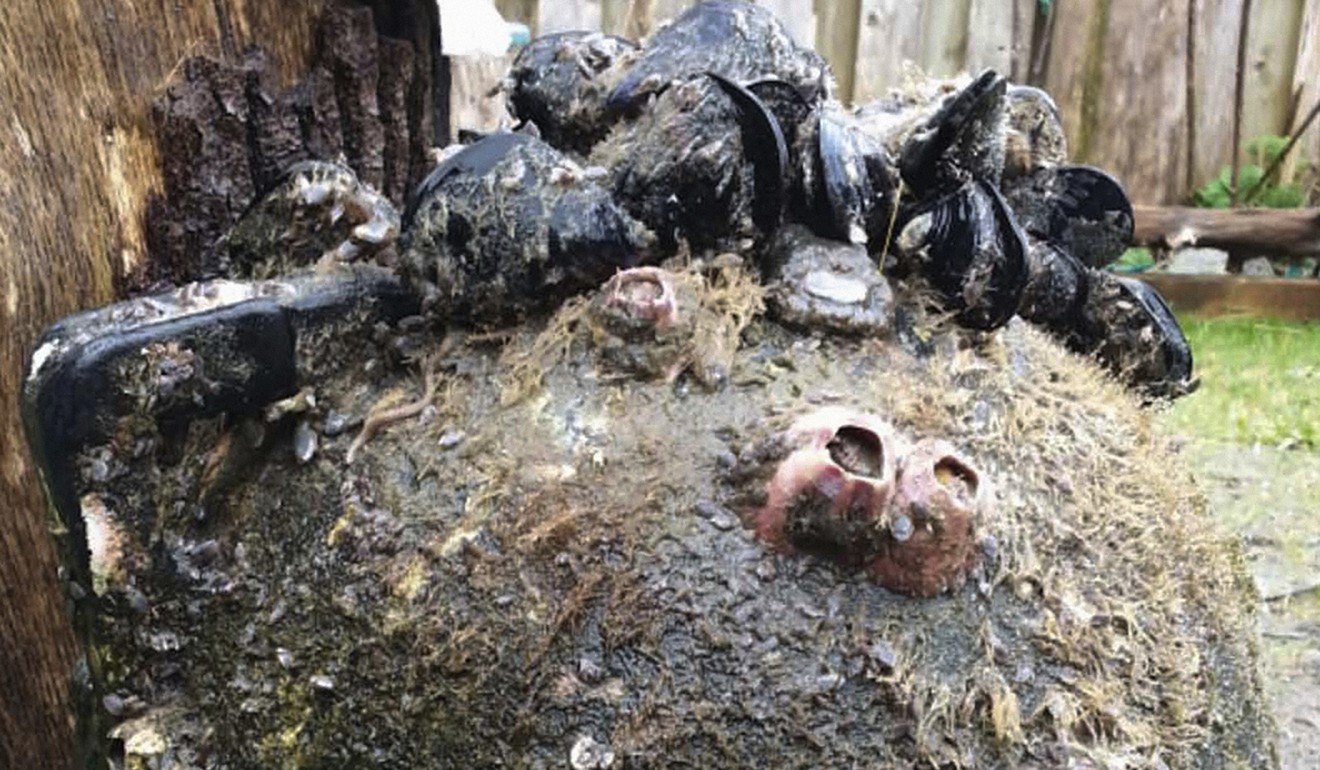
2011 tsunami carried a million Japanese sea creatures to US west coast
300 species of sea life were borne across the Pacific in ‘one of the biggest unplanned natural experiments in marine biology’, says researcher
The deadly tsunami that struck northeast Japan in 2011 has carried almost 300 species of sea life thousands of kilometres across the Pacific Ocean to the west coast of the United States.
In what experts are calling the longest maritime migration ever recorded, an estimated one million creatures – including crustaceans, sea slugs and sea worms – made the 7,725km journey on a flotilla of tsunami debris.

The huge tsunami, triggered by a 9.0 magnitude earthquake on the afternoon of March 11, 2011, generated five million tonnes of debris from the three prefectures of Iwate, Miyagi and Fukushima.
About 70 per cent sank quickly to the ocean floor, according to experts, but countless buoys, docks, boats and other items with buoyancy were swept out to sea.
Between June 2012 and February this year 289 Japanese species attached to 600 pieces of debris washed up on beaches in the states of Washington, Oregon, California, British Columbia, Alaska and Hawaii, according to the study.
Some of the creatures – about two-thirds of which had never been seen on the US west coast – reproduced as they drifted eastward.


Only last year – five years after the disaster – a Japanese boat arrived in Oregon with 20 fish native to the western Pacific living inside. Some of the fish can be viewed at an aquarium in the state, Carlton said.
The tsunami flotilla is a reminder of the threat that millions of tonnes of plastic pose to the global marine environment.
Most of the creatures found in the US were attached to buoys, boats, crate and other items made from plastic, fibreglass and other materials that do not decompose.
“I didn’t think that most of these coastal organisms could survive at sea for long periods of time,” said Greg Ruiz, a marine biologist at the Smithsonian Environmental Research Center, who co-authored the study.
“But in many ways they just haven’t had much opportunity in the past. Now, plastic can combine with tsunami and storm events to create that opportunity on a large scale.”
Experts say it will be several years before they can say if any of the creatures have colonised on the west coast, which might pose a threat to native marine life.
The creatures are not the only products of the tsunami to have generated interest on the other side of the Pacific. In April 2012 a couple in Alaska found a football belonging to Misaki Murakami, a Japanese teenager who had lost his home in the disaster.
One month later a Harley-Davidson motorcycle lost in the disaster washed up on a Canadian beach 2,400km miles away.

